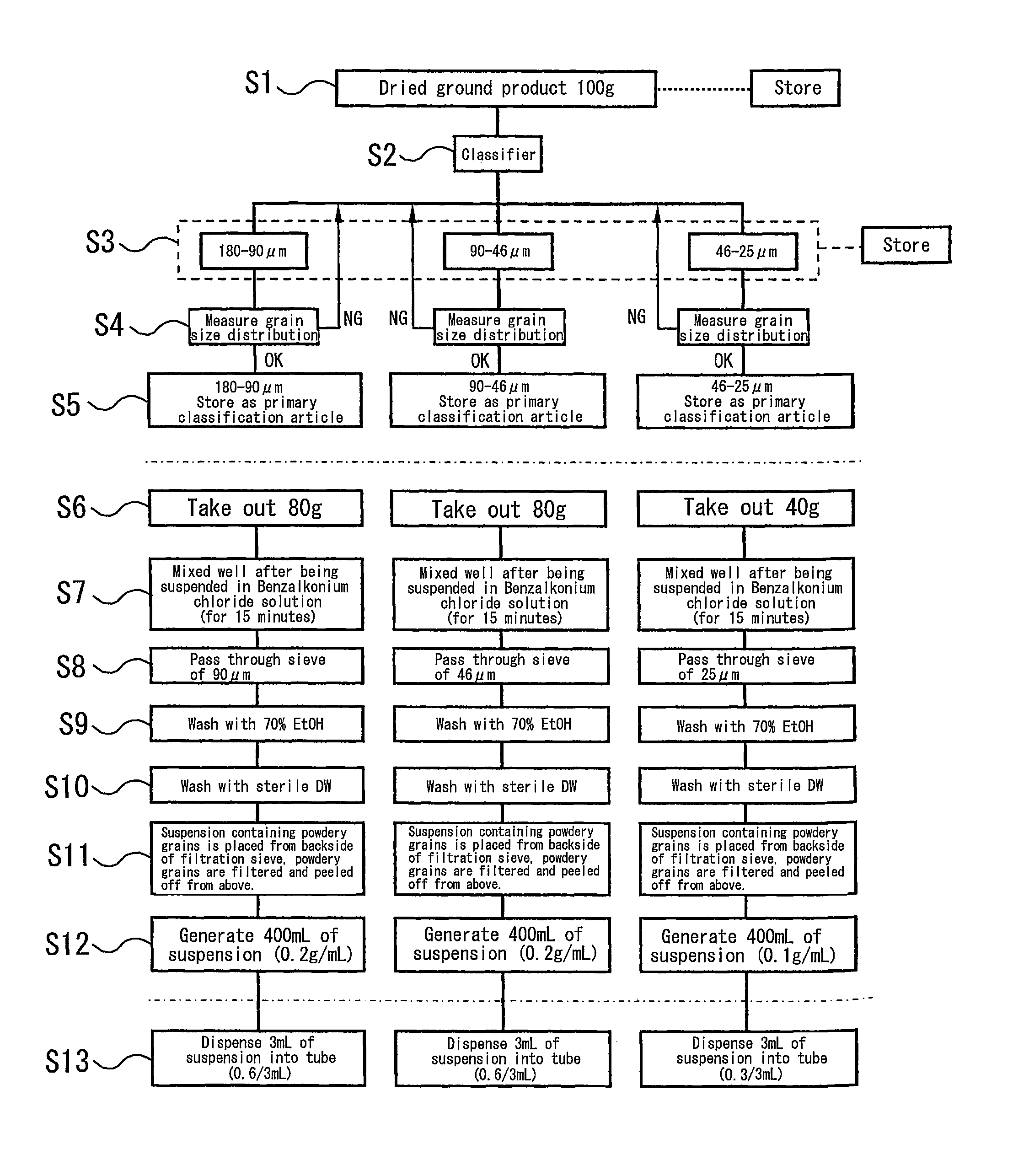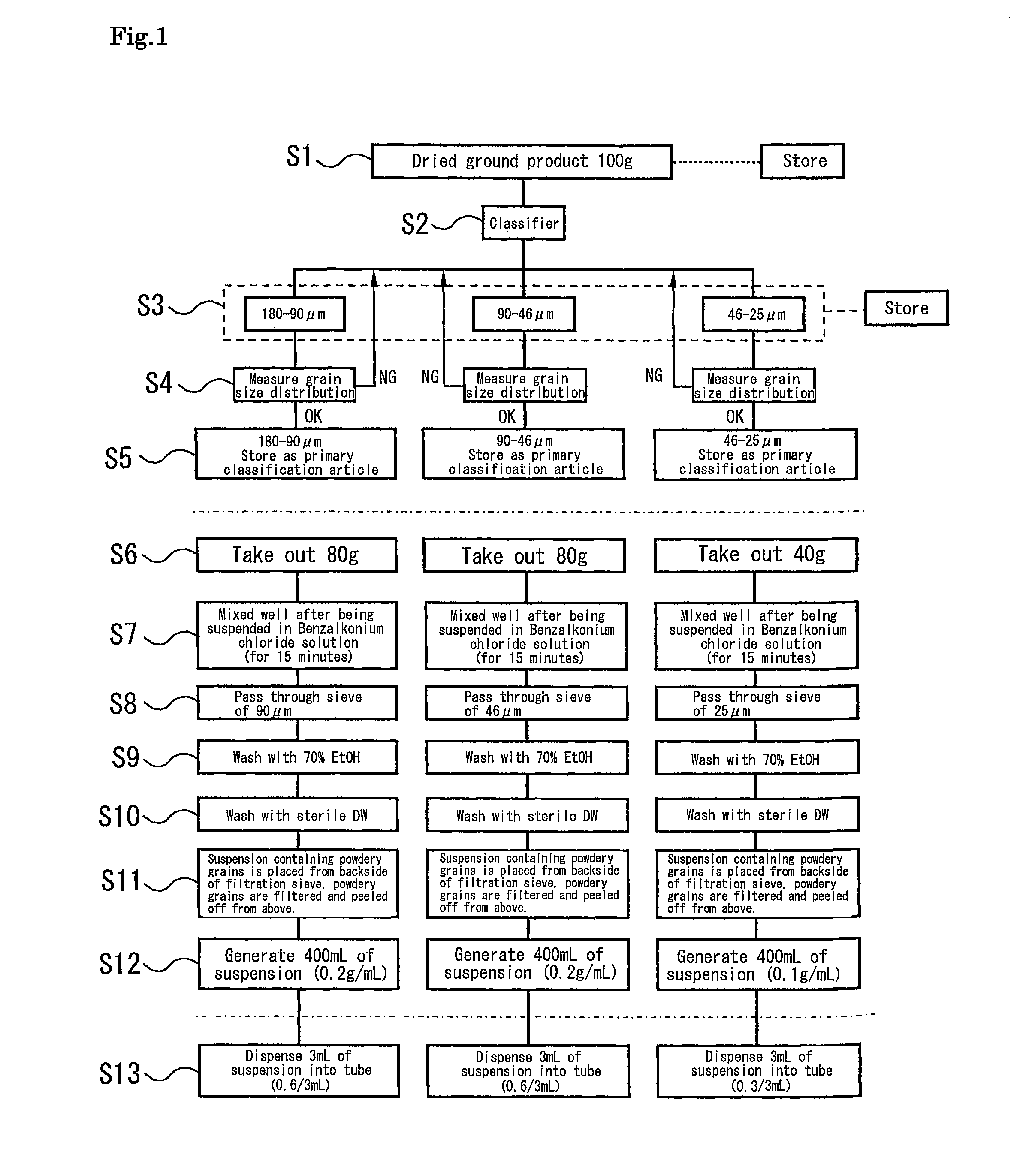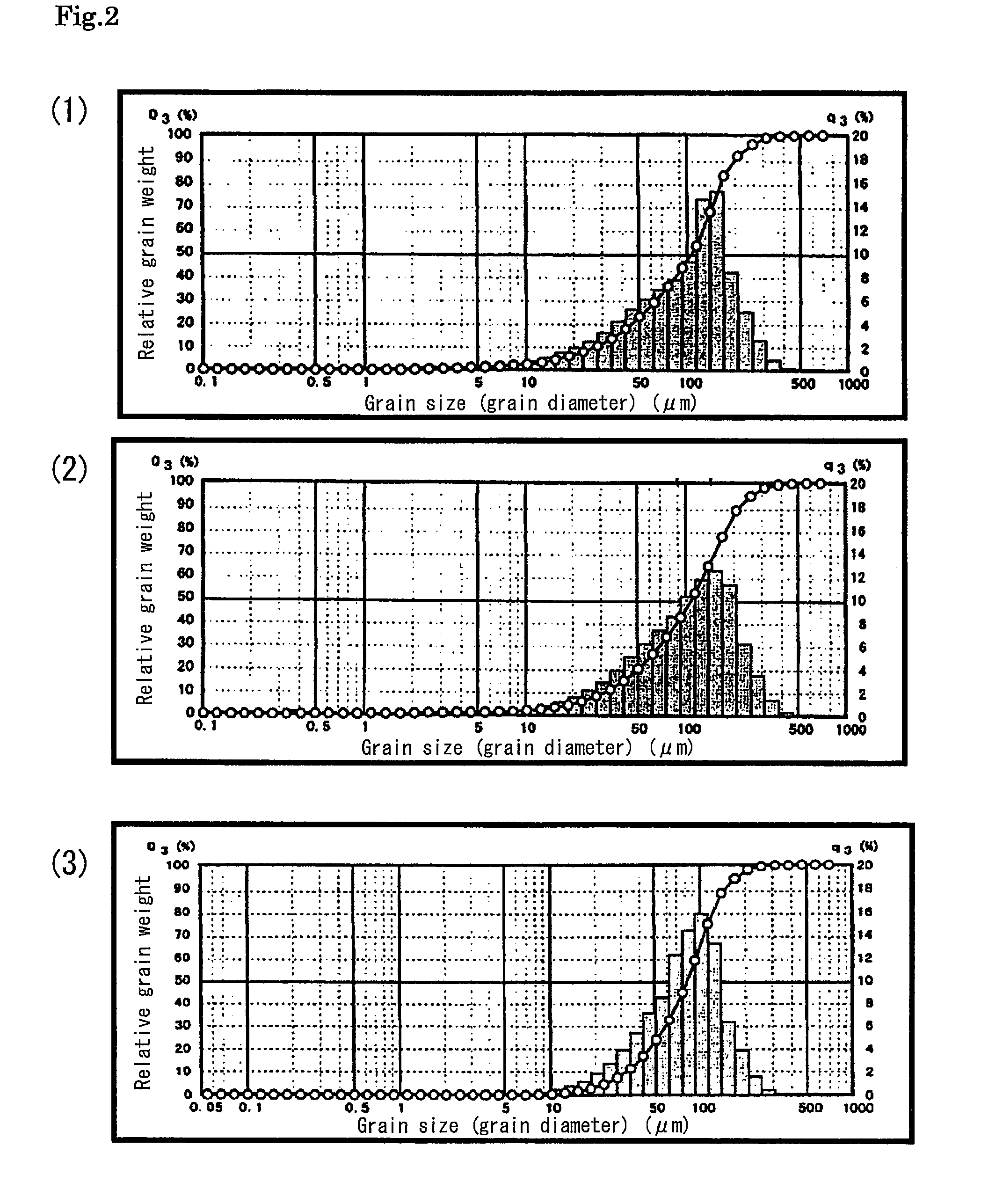Material For Capturing Microbes, Device For Capturing Microbes, Method Of Capturing Microbes, And Method Of Producing Material For Capturing Microbes
a technology for microorganisms and microorganisms, which is applied in the field of material for capturing microorganisms, devices for capturing microorganisms, and methods for capturing microorganisms, can solve the problems of difficult to handle a large amount of liquid of more than 1 liter at a time in view of equipment size, and achieves the effect of increasing the adsorption efficiency or bonding power, reducing the risk of death, and reducing the risk of aging
- Summary
- Abstract
- Description
- Claims
- Application Information
AI Technical Summary
Benefits of technology
Problems solved by technology
Method used
Image
Examples
first embodiment
[0130]As shown in the flow chart in FIG. 1, the manufacturing method roughly includes a pulverizing step for producing powdery grains with a targeted grain size of from 10 μm to 100 μm by using a pulverizer (corresponding to step S1), a classification step for screening the powdery grains to classify the powdery grains into three bands of grain size (grain diameter ranges), that is, 180 μm to 90 μm, 90 μm to 46 μm, and 46 μm to 25 μm (corresponding to steps S2 to S5), and a powdery grains treatment step for performing various treatments so that the classified powdery grains can be used as the material for capturing microbes or the like (corresponding to steps S6 to S13).
[0131]Step S1 corresponding to the pulverizing step is for pulverizing an unpulverized ion exchange resin material as the adsorbent resin in which, for example, three kinds of pulverizable resins are used as the matrix. As the ion exchange resin material, test number (1) is a wet item IRA400JCL (Organo Corporation),...
second embodiment
[0150]A device for capturing microbes or the like 10 suitable for performing a treatment using irregular-shaped powdery grains 11 serving as the material for capturing microbes or the like will be explained with reference to FIG. 3.
[0151]The device for capturing microbes or the like 10 according to the second embodiment includes: a casing 12; a microbes or the like capturing section 14 housed above a partition plate 13 provided in the casing 12; a stirring container 16 having a stirring wall 17 protruding inward from an inner wall; a rotation drive section 18 provided to penetrate a hole 15 in the partition plate 13 to rotate the stirring container 16; and an electric circuit 20 housed below the partition plate 13 in which a control section that controls the microbes or the like capturing section 14 and the rotation drive section 18, and a power source are housed.
[0152]The microbes or the like capturing section 14 includes, as the flow channel, a suction flow channel 24 inserted in...
third embodiment
[0168]FIG. 6 shows a device for capturing microbes or the like 58 according to a
[0169]The device for capturing microbes or the like 58 is different from the device for capturing microbes or the like 10 according to the second embodiment in that a peristaltic pump is used instead of the bellows pump. Like reference symbols refer to like parts in FIG. 3, and detailed explanation thereof is omitted.
[0170]The device for capturing microbes or the like 58 has a microbes or the like capturing section 60 housed above the partition plate 13 provided in the casing 12. The microbes or the like capturing section 60 includes, as the flow channel, a suction flow channel 62 formed of an elastic resin such as fluorine resin rubber or silicone, inserted into the stirring container 16 and having one suction port 61 through which suction of a liquid is performed, and a discharge flow channel 26 inserted into the stirring container 16 and having one discharge port 25 through which discharge of the liqu...
PUM
| Property | Measurement | Unit |
|---|---|---|
| grain size | aaaaa | aaaaa |
| grain size | aaaaa | aaaaa |
| pore diameter | aaaaa | aaaaa |
Abstract
Description
Claims
Application Information
 Login to View More
Login to View More - R&D
- Intellectual Property
- Life Sciences
- Materials
- Tech Scout
- Unparalleled Data Quality
- Higher Quality Content
- 60% Fewer Hallucinations
Browse by: Latest US Patents, China's latest patents, Technical Efficacy Thesaurus, Application Domain, Technology Topic, Popular Technical Reports.
© 2025 PatSnap. All rights reserved.Legal|Privacy policy|Modern Slavery Act Transparency Statement|Sitemap|About US| Contact US: help@patsnap.com



